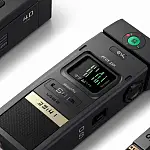The Hynek UFO Classification SystemHynek UFO Classification is the traditional method of describing an event as distant or close encounter of the first, second or third kind.
This is the traditional method of describing an event as a distant or close encounter of the first, second or third kind. The investigator should be aware that, unless the case report can reasonably rule out natural and man-made sources, the HYNEK rationale declares it to be a non-case, and so no value is given. HYNEK -
DE-1 - Nocturnal Light
DE-2 - Daylight Disc
DE-3 - Radar-visual
CE-1 - Light/object in Proximity
CE-2 - Physical Trace
CE-3 - Occupant
UFO reports differ in many details. But several similarities recur in such features as shape, manoeuvrability, appearance, disappearance, sound and colour. There are several basic observational categories into which sighting reports may be classified.
Relatively Distant Sightings
1. Noctunal Lights
These are sightings of well-defined lights in the night sky whose appearance and/or motion are not explainable in terms of conventional light sources. The lights appear most often as red, blue, orange or white. They form the largest group of UFO reports.
2. Daylight Discs
Daytime sightings are generally of oval or dis- shaped, metallic-appearing objects. They can appear high in the sky or close to the ground, and they are often reported to hover. They can seem to disappear with astounding speed.
3. Radar-Visual cases
Of special significance are unidentified "blips" on radar screens that coincide with and confirm simultaneous visual sightings by the same or other witnesses. These cases are infrequent.
Relatively Close Sightings (within 200 yards)
1. Close Encounters of the First Kind (CE-I).
Though the witness observes a UFO nearby, there appears to be no interaction with either the witness or the environment.
2. Close Encounters of the Second Kind (CE-II)
These encounters include details of the interaction between the UFO and the environment which may vary from interference with car ignition systems and electronic gear to imprints and burns on the ground and physical effects on plants, animals and humans.
3. Close Encounters of the Third Kind (CE-III)
In this category, occupants of a UFO - human-like entities ("humanoid") or not humanlike in appearance - have been reported. There is usually no direct contact or communication with the witness. However, in recent years, reports of incidents involving very close contact - even detainment of witnesses - have increased.
The Kinds of Evidence
In addition to eyewitness reports, scientific evidence for the presence of something very unusual falls into these categories:
1. Physical Traces
Compressed and dehydrated vegetation, broken tree branches, and imprints in the ground have all been reported. Sometimes a soil sample taken from an area where a UFO had been seen close to the ground will be determined, through laboratory analysis, to have undergone heating or other chemical changes not true of a control sample.
2. Medical Records
Medical verification of burns, eye inflammations, temporary blindness, and other physiological effects attributed to encounters with UFOs - even the healing of previous conditions - can also constitute evidence, especially when no other cause for the effect can be determined by the medical examiner.
3. Radarscope Photos
A tape of traces from a radar screen on which a "blip" of a UFO is appearing is a powerful adjunct to a visual sighting because it can be studied at leisure instead of during the heat of the moment of the actual sighting.
4. Photographs
While it might seem that photographs would be the best evidence for UFOs, this has not been the case. Hoaxes can be exposed very easily. But even those photos that pass the test of instrumented analysis and/or computer enhancement often show nothing more than an object of unknown nature, usually some distance from the camera, and very often out of focus. For proper analysis of a photo, the negative must be available and the photographer, witnesses and circumstances must be known. In a few exceptional cases, photos do exist that have been thoroughly examined and appear to show a structured craft.
source: Dr. J. Allen Hynek










